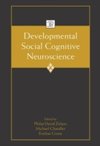
-
 Anglický jazyk
Anglický jazyk
Amino Acid Neurotransmitters
Autor: Leslie Iversen
1 Biochemical Pharmacology of GABA in CNS.- 1. Introduction.- 2. Effects of Compounds on the Metabolism of GABA in Vivo.- 2.1. Systemic Administration.- 2.2. Intracranial and Topical Application.- 3. Effects of Compounds on the Uptake and Release of GABA... Viac o knihe
Na objednávku
49.49 €
bežná cena: 54.99 €
O knihe
1 Biochemical Pharmacology of GABA in CNS.- 1. Introduction.- 2. Effects of Compounds on the Metabolism of GABA in Vivo.- 2.1. Systemic Administration.- 2.2. Intracranial and Topical Application.- 3. Effects of Compounds on the Uptake and Release of GABA in Nervous Tissue.- 3.1. Uptake Studies.- 3.2. Release Studies.- 4. Effects of Compounds on the Interaction of GABA with Its Postsynaptic Receptor.- 5. Convulsant and Anticonvulsant Compounds Related to the GABA-Dependent Inhibitory Mechanism.- 5.1. Mechanisms of Drug-Induced Convulsions.- 5.2. Mechanisms of the Anticonvulsant Action of Drugs.- 6. Pharmacological Relationships Between Biogenic Amines and GABA.- 7. Effects of Compounds on GABA Metabolism During Ontogeny.- 8. Pharmacological Effects of GABA.- 9. Clinical Implications of Pharmacological Studies of GABA-Dependent Inhibition.- 10. References.- 2 Biochemistry of Glycine, Taurine, Glutamate, and Aspartate.- 1. Introduction.- 2. Chemistry.- 3. Occurrence.- 3.1. Assay Methods.- 3.2. Regional Distribution.- 3.3. Subcellular Distribution.- 4. Metabolism.- 4.1. Glycine.- 4.2. Taurine.- 4.3. Glutamate and Aspartate.- 5. Transport.- 5.1. Uptake.- 5.2. Release.- 6. Conclusion.- 7. References.- 3 Amino Acid Receptors in CNS. I. GABA and Glycine in Spinal Cord.- 1. Introduction.- 2. Localization of Glycine and GABA in Spinal Cord.- 2.1. Localization in Gray and White Matter.- 2.2. Effect of Destruction of Interneurons.- 2.3. Cellular Localization from Uptake and Autoradiographic Studies.- 3. Release of GABA and Glycine.- 4. Pharmacology of Agonists.- 4.1. Effects on Reflex Activity.- 4.2. Postsynaptic Effects on Single Cells.- 4.3. Effects on Presynaptic Terminals.- 4.4. Effects on Dorsal Root Ganglia.- 5. Pharmacology of Antagonists.- 5.1. Strychnine.- 5.2. Bicuculline and Picrotoxin.- 6. Miscellaneous Agents.- 7. Amino Acids in Supraspinal Regions.- 7.1. Cuneate Nucleus.- 7.2. Reticular Formation.- 8. Concluding Remarks.- 9. References.- 4 Amino Acid Receptors in CNS. II. GABA in Supraspinal Regions.- 1. Introduction.- 2. Inhibitory Action of GABA on Cortical Neurons.- 2.1. Extracellular Recording.- 2.2. Intracellular Recording.- 2.3. Antagonism.- 3. GABA Receptors in Supraspinal Regions Other Than Cerebral Cortex.- 3.1. Cuneate Nucleus.- 3.2. Deiters¿ Nucleus.- 3.3. Cerebellar Cortex.- 3.4. Striatonigral Pathway.- 3.5. Olfactory Bulb.- 4. Inhibitory Interneurons of Cerebral Cortex.- 5. Structure-Activity Relationships.- 5.1. GABA-like Amino Acid.- 5.2. GABA Antagonists.- 5.3. Picrotoxin.- 5.4. Bicuculline.- 5.5. Conclusion.- 6. References.- 5 Excitatory Amino Acid Receptors in the Central Nervous System.- 1. Introduction.- 2. Mechanisms of Glutamate Action.- 3. Excitation of Neurons by Analogues and Homologues of Glutamate.- 4. Receptors for Glutamate Uptake.- 5. Antagonists of Amino Acid-Induced Excitations.- 6. Antagonists of Glutamate Uptake.- 7. The Amino Acids as Physiological Synaptic Transmitters.- 8. References.- 6 Peptide Receptors in CNS.- 1. Introduction.- 2. Angiotensin II.- 2.1. Characterization and Localization of Central Effects.- 2.2. Structural Requirements for Activity.- 2.3. Mechanism of Action.- 2.4. Access of Angiotensin to Central Sites and Its Presence in Brain.- 3. Substance P and Related Peptides.- 3.1. Distribution and Release.- 3.2. Pharmacology.- 4. Neurohypophyseal Hormones.- 4.1. Synaptic Properties of Neurosecretory Cells.- 4.2. Action of Neurohypophyseal Hormones in CNS.- 5. Other Peptides.- 5.1. Bradykinin.- 5.2. Adenohypophyseal Hormones and Hypothalamic Releasing Factors.- 5.3. Sleep Factor Delta.- 6. Conclusion.- 7. References.- 7 Amine and Amino Acid Receptors in Gastropod Neurons.- 1. Introduction.- 2. Electrophysiological Results from a Multireceptor System and Their Relationship to Methodology.- 2.1. General Findings Concerning ACh Responses in Aplysia Neurons.- 2.2. Relationship of These General Findings to Methodology.- 3. R¿m¿f Receptor Pharmacology for Amines and Amino Acids.- 3.1. ACh Receptors.- 3.2. Serotonin Receptors.- 3.3. Dopamine Receptors.- 3.4. GlutamicAcid.- 3.5. Other Receptors.- 4. Analysis of Certain Drug-Receptor Characteristics in Molluscs.- 4.1. Action Spectrum of Antagonists.- 4.2. Slow Responses.- 4.3. Dose-Response Curves from Molluscan Neurons.- 4.4. Receptor Localization.- 5. Conclusions.- 6. References.
- Vydavateľstvo: Springer US
- Rok vydania: 2013
- Formát: Paperback
- Rozmer: 254 x 178 mm
- Jazyk: Anglický jazyk
- ISBN: 9781468431766












